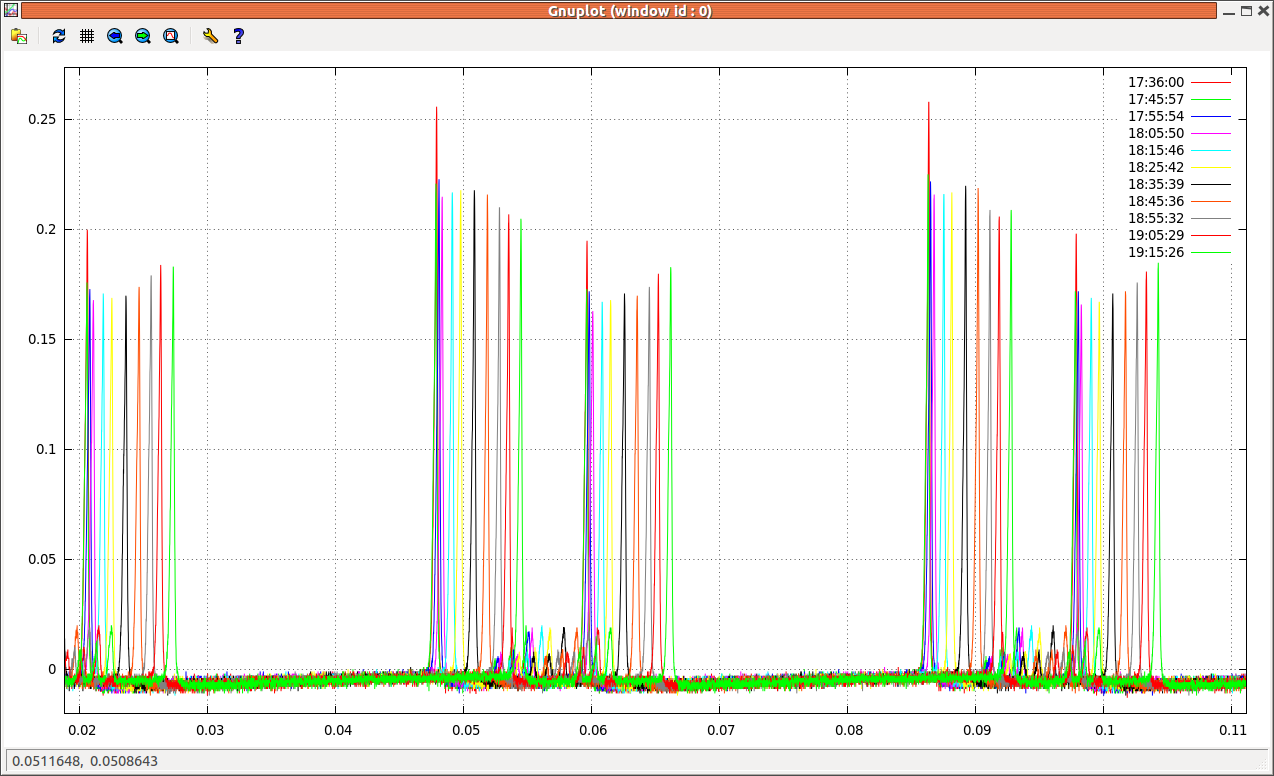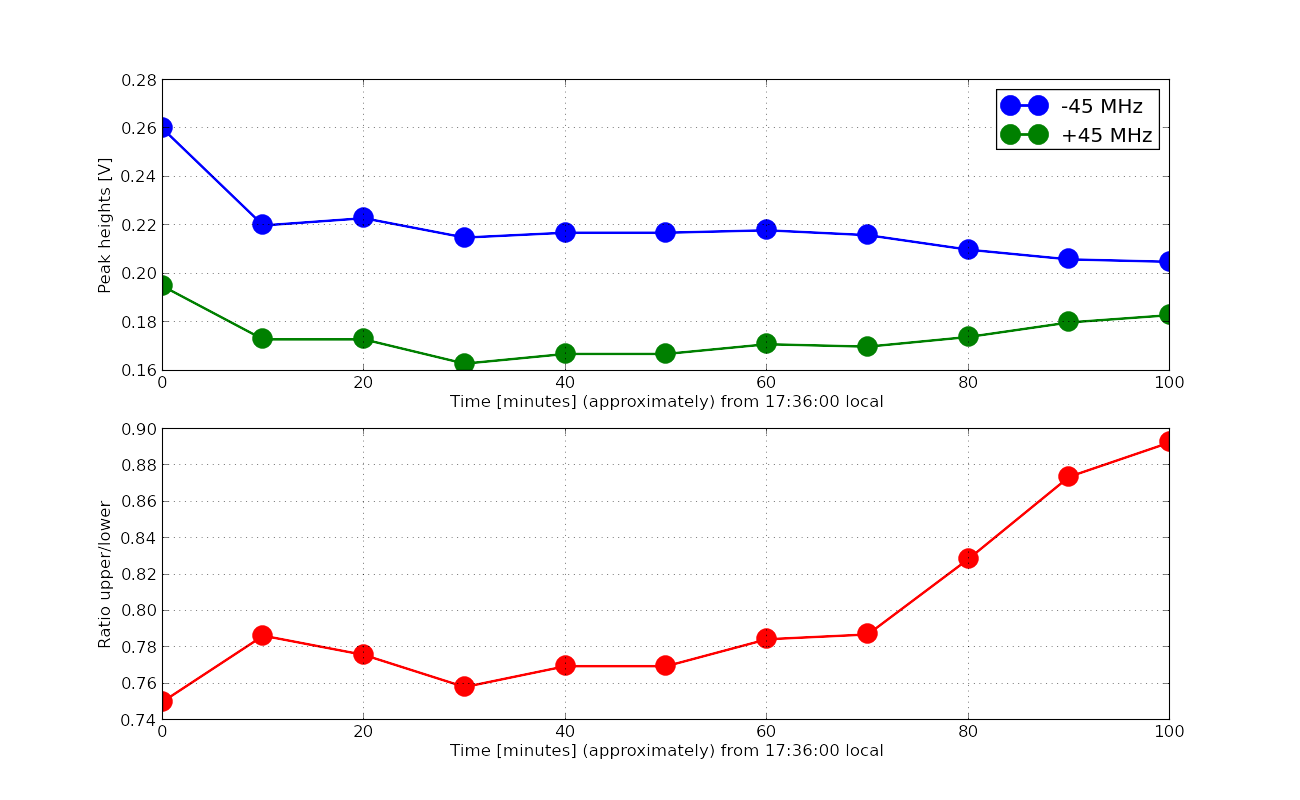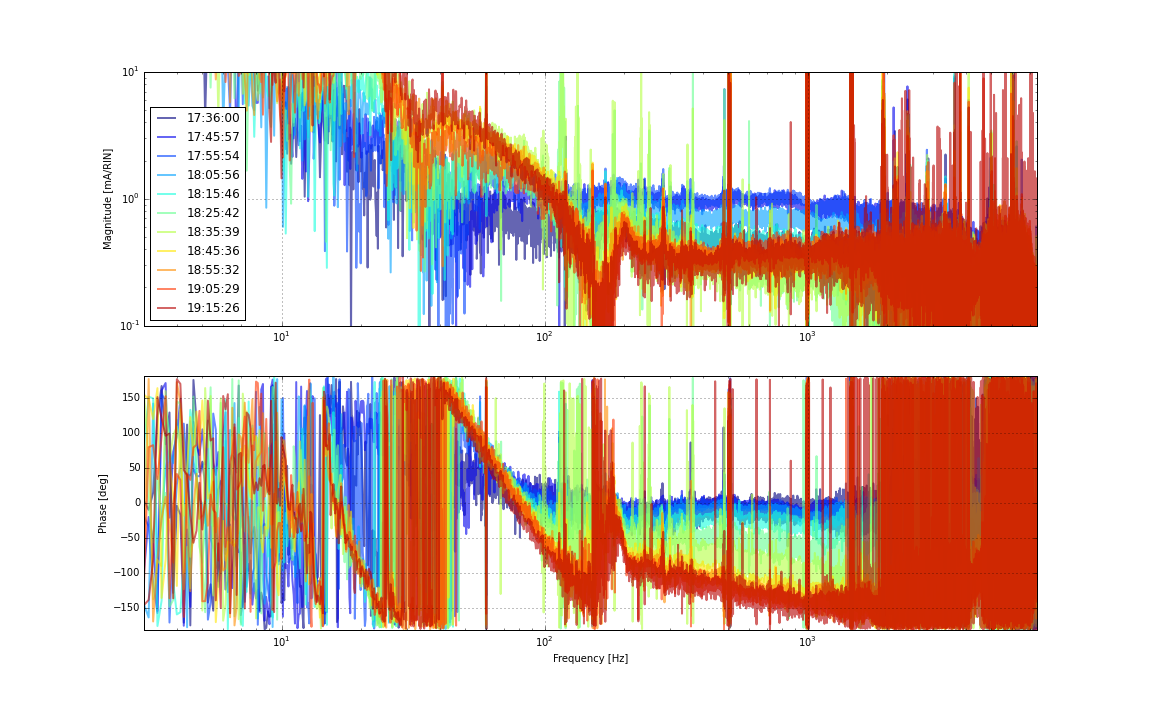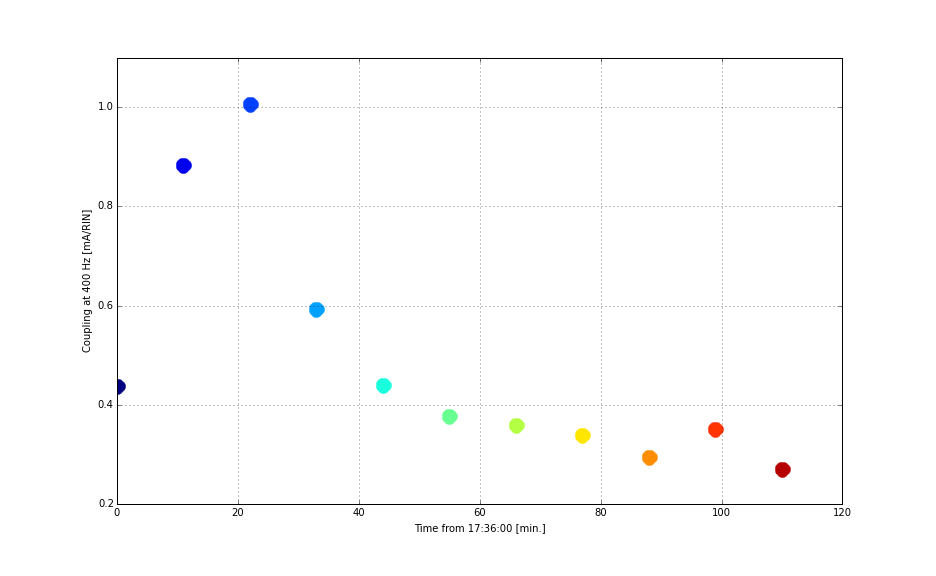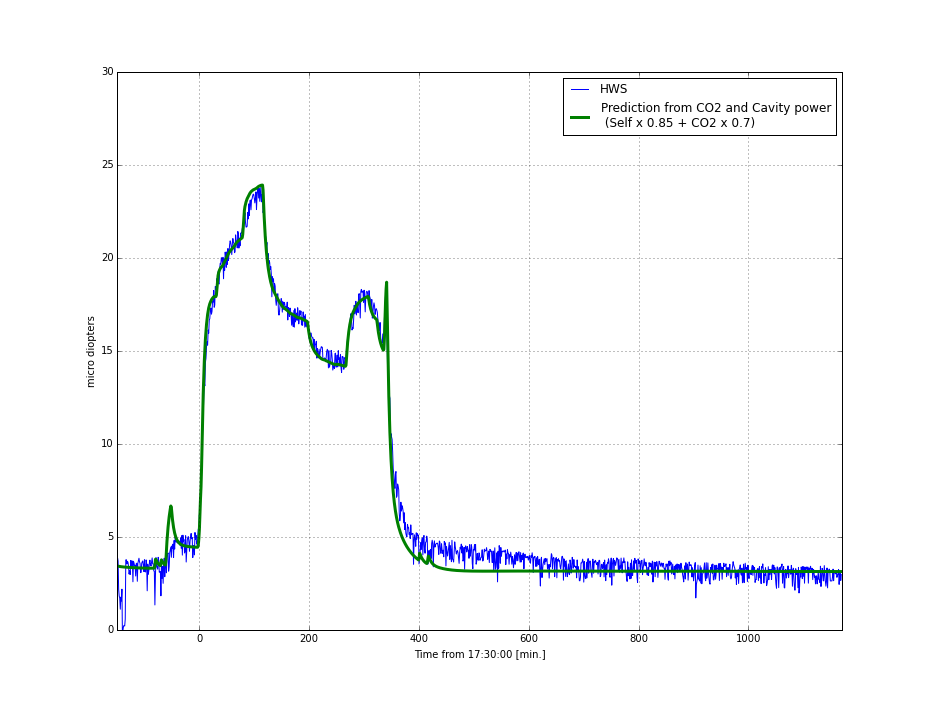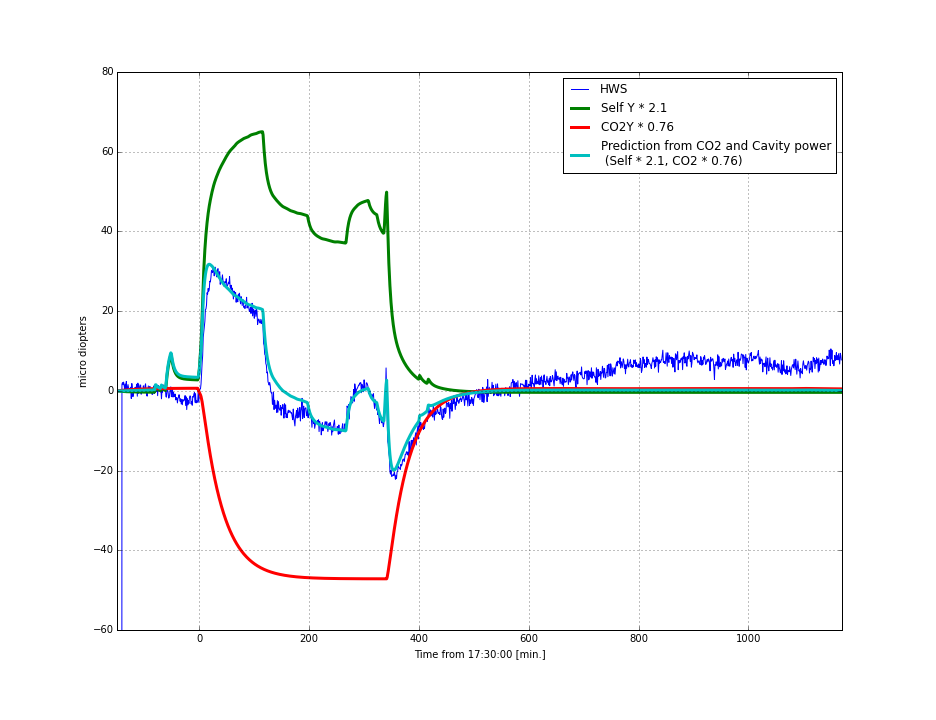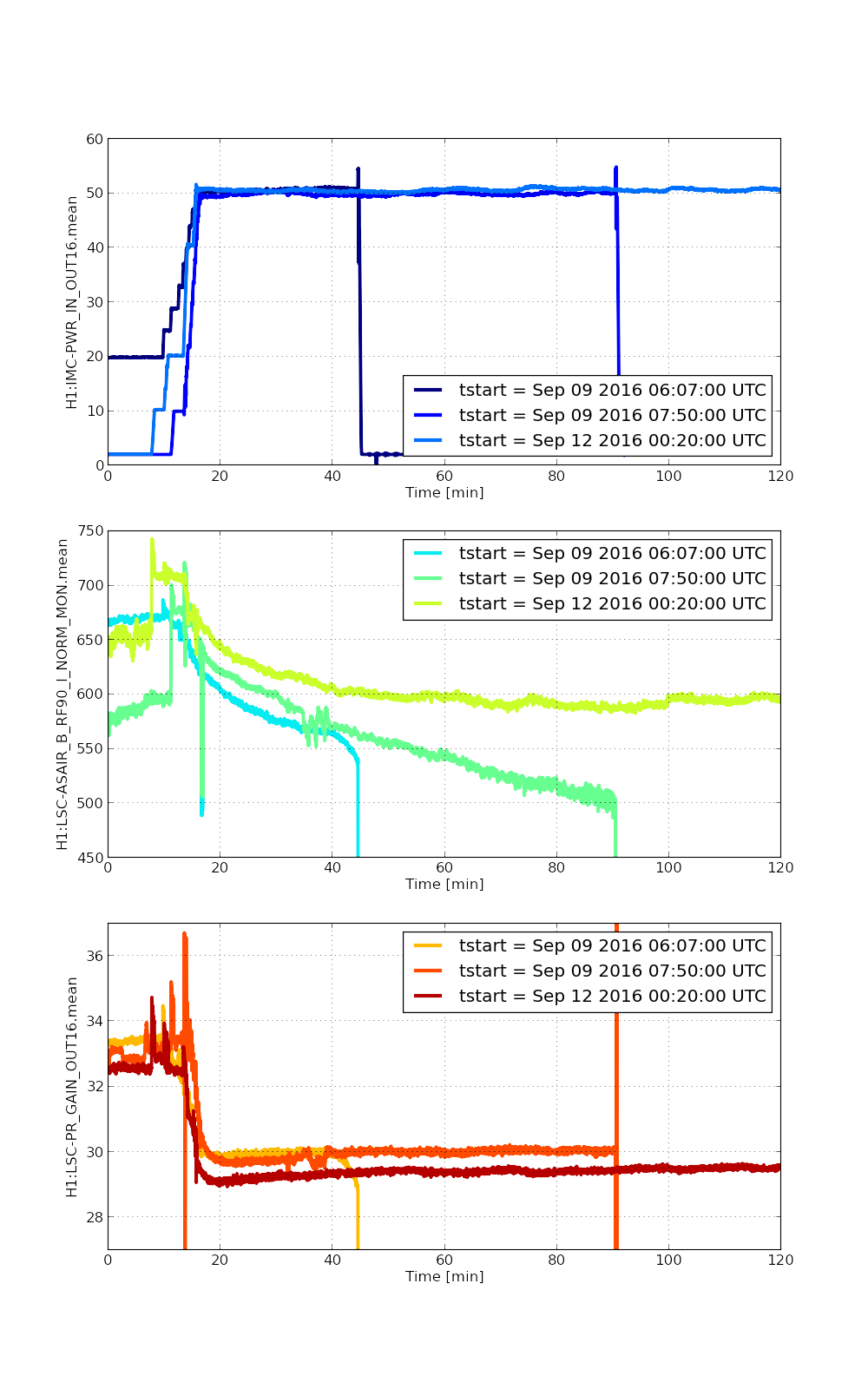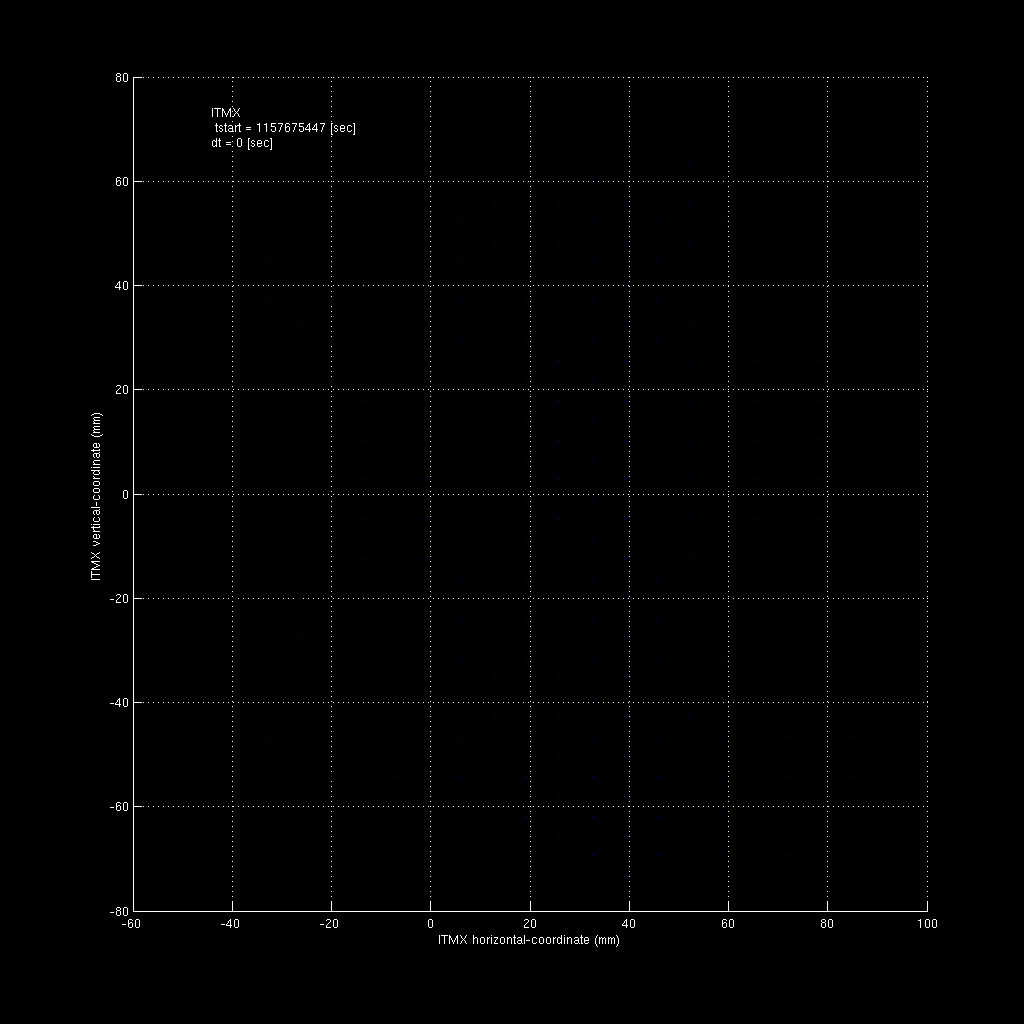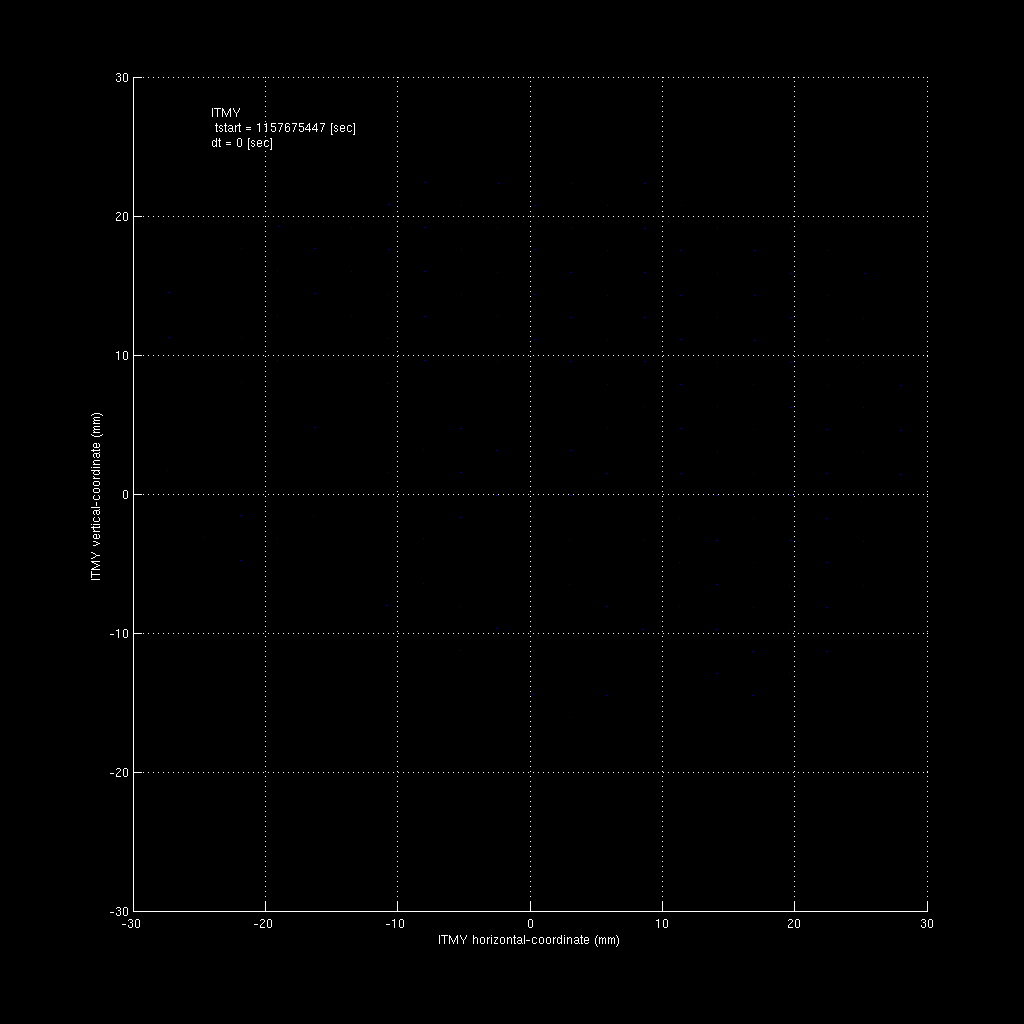Josh, Andy We noticed that the OMC is moving longitudinally by almost 100 microns between the 50 and 35 Watt locks overnight. It also moves after the other changes in power. The first plot shows the position as a function of power. We were curious whether there is a servo responsible for this, or if it's unintended, like a thermal effect. Is there a slow servo moving the OMC to maximize gain, that shifts the position as the IFO thermalizes? The second plot zooms in on the time of the change down from 50 Watts. The OMC is stable during most of the lock, but then starts moving before the power is changed. Five minutes after the change, it starts moving in the opposite direction. Is it understood why it seems like it was starting to run away?
This is a result of the alignment dither loop railing the OMC suspension actuators. This should not be happening, especially after Sheila offloaded some of the alignment to the OMs (alog 29377). We'll look into it.
In the attached screenshot, note that the first lock at 50W does not rail the actuators, but we do pretty immediately for the second lock. H1:FEC-46_DAC_OUTPUT_0_6 is the T3 actuator on the OMC suspension.
We have angle to length feedforward for the OMC which was put in place to prevent scattering due to the angular dirves 19691. In the second attachment to the alog Jenne linked you can see that the offloading helped us to not rail the suspensions, but most of the problem was due to the change as we power up not the miscentering when we first lock, so offloading with the pico motors could only help a litle bit. I don't know why there seems to be a difference between the alignment of the carrier (which the OMC follows using the alignment dither loops) and the sidebands at the AS port, whoes alignment should be fixed by the AS_C and AS WFS centering servos.
Durring the last few minutes of the 50W lock, the DC PDs were saturating due to PI, which could have confused the dither servo.
If this continues to happen, we can try retuning the angular feedforward for the OMC. It is possible both this and the confusing noise are related to the PIs being rung up.





























